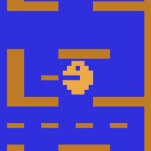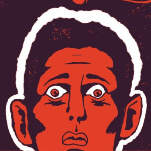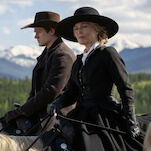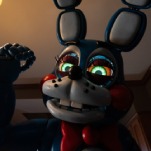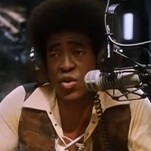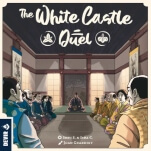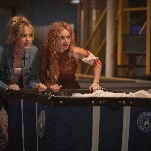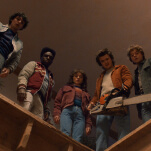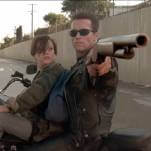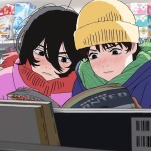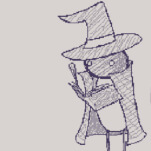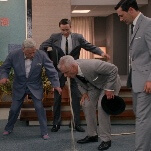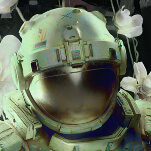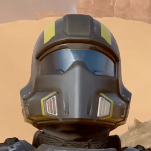Star Trek: Deep Space Nine: “The Siege”/“Invasive Procedures”

“The Siege” (season 2, episode 3; originally aired 10/10/1993)
In which Sisko gets his Die Hard on
Let’s get this out of the way first: this ends way too easily. After three episodes of buildup to conflict, after Jaro and Winn’s stratagems, after the Cardassian villainy and guerrilla warfare on the station, all Sisko and his team need to save the day is a ship’s manifest. Kira gets it to the ministers, and with barely an objection, Jaro slinks away, and Winn goes with the flow. It’s abrupt, right up to the oh-so-convenient death of Li Nalas. (Which I totally called, in case you forgot.) This is one of the main difficulties of multi-part stories. You’ve got to shake up the status quo enough to justify the format, while at the same time finding some way to make sure everything gets back to roughly the way it started. That’s a tall order, and the ending is the trickiest part. The details of this particular ending make sense, like Winn’s sudden-but-inevitable-betrayal of Jaro once the wind turns, but it’s something of an anticlimax after all that buildup.
Really, though, the only reason this is noticeable is that the build-up of “The Siege” is pretty damn awesome. I know enough about future seasons of Deep Space Nine to know that the shit is going to get real somewhere down the line, and viewed as a preview of coming attractions, this episode hits all the right notes to convince me of the show’s ability to convey a wide-scale conflict. There’s a terrific sense running through most of the hour of events escalating out of control, partly because of Jaro and Winn’s manipulations, but also because past a certain point, that’s just what events do. There are a few too many smirking villains here for the conflict to be morally complex, but that doesn’t change the fact that this is an empty battle, driven by a corrupt, power-hungry few who use empty patriotism to achieve their own ends. It’s not good guys versus bad guys. It’s good guys versus a few bad guys and a lot of confused guys, and that takes all the fun out of shooting people with a laser gun.
Well, some of the fun. The conclusion to DS9’s first three-parter is taken up by two main storylines: Sisko and his team’s combined effort to disrupt and throw off a Bajoran-led occupation of the station, and Dax and Kira’s rush to get the proof of Cardassian involvement to the Barjoran ministers. After the long buildup of “The Circle,” this is mostly action, and rousing stuff at that; whatever reservations I have about the very end, there’s no denying that the show does its level best to deliver on the promise of parts one and two, and I can appreciate the effort, even if I don’t always love the results. This is like a series making the first fumbling moves toward self-definition, and it’s all the more remarkable because it’s heading in a new direction for the Star Trek franchise. There is a complex political situation which, easy ending or no, won’t be going away any time soon. These are villains who are powered, in part, by the social unrest which they encourage but did not themselves create.
When we left last week, Bajoran warships were headed to Deep Space Nine to oust the remaining Federation personnel. Sisko has decided to stay, and gives a speech explaining to his crew what “staying” means: it’s dangerous, with an uncertain outcome, and there’s no chance of any Starfleet backup arriving in the nick of time. A small group of fighters remains on the station, while everyone else evacuates (and Quark takes advantages of the chaos to try and make some money), and it’s a sign in this episode’s favor that this sequence works, even though we know the evacuation is only temporary. The whole thing may run a little longer than it needs to, and I’m not sure I really needed another fight between Keiko and O’Brien, but all of the drama over departure works to sell the fact that, whatever those of us in the audience know about the restrictions of episodic television (and those damnable “To Be Continued… ” tags), the crisis is very real for the people stuck inside it. This raises the stakes for the story, and also drives home the unsettling, awful quickness with which events can go awry. Two episodes ago, the Circle was just a group of creeps spray-painting slogans. Now they’ve taken over the government, and supposedly reasonable men are making threats.
This is something that Star Trek: The Next Generation never quite managed to sell. It could give us planets at war, and it could make heavy-handed proclamations about the horrors of conflict, but I can’t think of an episode that demonstrated as well as this three-parter does the surreal speed with which aggressive debate can lead to outright hostilities. It’s not perfect; while this episode does find Kira standing on the floor of the Bajoran government while ministers rage around her, it never really justifies the her vision from “The Circle.” (I’ve already gone into my reservations about the out-and-out villainy of Jaro and Winn.) Plus, while there’s tension and decently high stakes, this is all still comparatively safe. Li Nalas dies, but he’s a guest star, and he had death written on his face from the first time we saw him. And it’s not even death that’s a problem, not really. The reason I criticized the “To Be Continued… ” in last week’s review is because it’s a clue from the show’s writers to reassure us that our view of the show, and of the show’s world, isn’t going to be seriously questioned. This is hand-holding, and that hand-holding pervades this episode. It’s a mark of how high in my estimation DS9 has already risen that I’m entertained but mildly disappointed with a storyline like this one.
Sisko, O’Brien, Bashir, Odo, and a very reluctant Quark stay on the station to fight back against General Krim (Stephen Macht, who we first met in “The Circle”) and his men. This conflict is arguably unnecessary. Kira and Dax have split off from the others with their crucial cargo manifest, and the conflict on Bajor between the Circle and sanity is only resolved after Kira brings the manifest in front of the council. Nothing that Sisko or the others do has much impact on Kira’s mission, but the guerrilla combat on DS9 is enjoyable enough that it’s hard to object. There’s a lot of running around and artful sabotage, and Odo proves once again he’s a good shapeshifter to have in a fight. Hell, Sisko’s team even manages to get right up close to the general himself before the battle comes to a conclusion. Having everyone crawling around the ducts and choking down O’Brien’s beloved combat rations helps create the illusion of danger, and the fact that this comes as the climax of a multi-episode arc gives it more weight than a regular standalone. Boil it down to its essence, there’s not a lot of change here, but it certainly feels epic in its best moments, and that’s something.
What else? Well, Kira and Dax make a great team, with Kira’s gung-ho enthusiasm bringing out a different, more distinctive side to Dax than we usually see. Steven Weber pops up for a guest turn as the venomous Colonel Day, making this maybe the most guest-star heavy run of episodes I’ve ever seen on a Trek show. And I suppose we should take a moment for Li Nalas’s passing, although it’s a death which inspires little in the way of real sorrow. While Nalas’s rescue back in “The Homecoming” started this mess, he’s never been a huge presence on the show; this fit his character, and, in those few moments when he did take center stage, gave him a certain tired gravity. But it also has the unfortunate effect of rendering his demise perfunctory, like the death of a celebrity you thought had been gone for years. Kira’s sorrow over his passing is convincing, and I love Sisko and O’Brien’s chat about the importance of remembering Nalas in the right way. It’s just—he gets taken out by a phaser blast after the battle is basically over. That’s not very deft storytelling, which basically sums up whatever issues I have with this odd little trilogy: an unfortunate lack of deftness. Thankfully, with its demonstrable willingness to explore Bajoran politics and challenge our heroes on their home turf, this episode demonstrates a heartening desire to improve.


